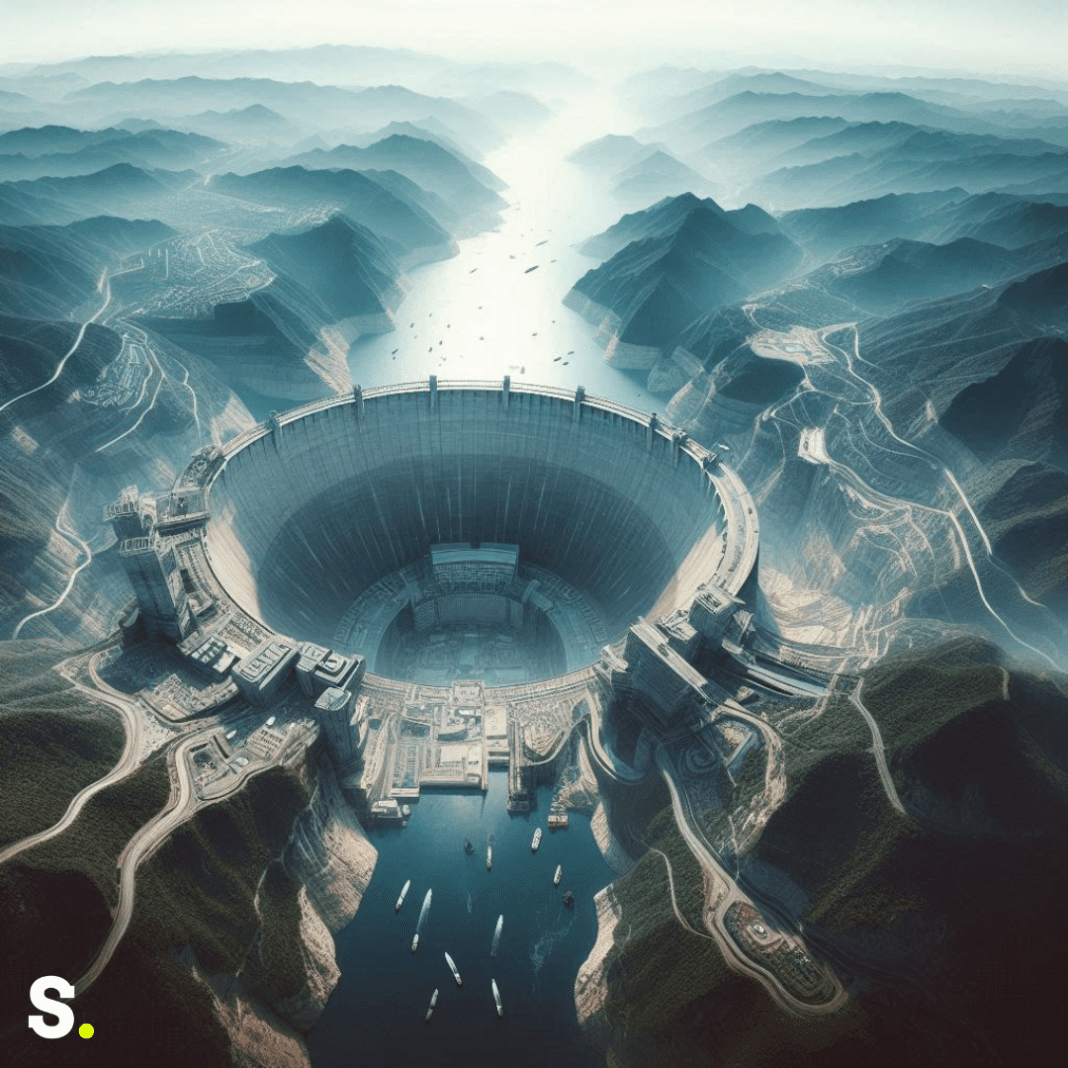The Three Gorges Dam’s Grand Scale
The Three Gorges Dam is an engineering marvel that stretches across the Yangtze River in Hubei province, China. This colossal structure, conceived in 1919 by Sun Yat-sen, was designed to tame the mighty Yangtze River’s floodwaters and represent China’s growing technological prowess. Its construction, which spanned from 1994 to 2012, required immense resources and effort, making it one of the most significant infrastructure projects in history.
It holds an enormous amount of water, with its reservoir reaching an elevation of 175 meters above sea level. This water, along with the dam’s massive concrete and steel structure, weighs an astounding 39 trillion kilograms. Given its immense scale, it’s no wonder that some scientists and media outlets have speculated that this colossal weight might have an impact on Earth’s rotation.
Understanding Moment of Inertia
To understand how the Three Gorges Dam might influence Earth’s rotation, it helps to know a bit about the concept of “moment of inertia.” A body’s moment of inertia is a measurement of how resistant it is to changes in its rotational motion. Think of it like this: when you spin around while holding your arms close to your body, you spin faster. But if you extend your arms, you spin more slowly. This happens because your body’s moment of inertia changes with the position of your arms.
The planet’s moment of inertia is determined by the distribution of mass with regard to the rotational axis of the Earth. When a massive object, like the Three Gorges Dam, adds weight to one part of the Earth, it affects the Earth’s rotation. Specifically, as mass is distributed farther from the axis, the Earth’s moment of inertia increases, which generally results in a slower rotational speed. This is why the dam’s weight could potentially affect the length of a day.
The Impact of the Dam on Earth’s Rotation
Recent studies have suggested that it has indeed affected the Earth’s moment of inertia. This indicates that the Earth’s rotation has been impacted by the weight of the water in the dam. However, the actual impact on the Earth’s rotation is incredibly small. Reports indicate that the change in the Earth’s rotation caused by it is only about 0.06 microseconds. To put it simply, this means that each day has become just 0.06 microseconds longer due to the dam’s weight.
While this change is minuscule, it is significant as it highlights the scale of human engineering achievements. It stands out as the largest man-made structure capable of affecting Earth‘s rotation, making it a unique case in the world of infrastructure.
In addition to its impact on Earth’s rotation, the Three Gorges Dam has had a range of other effects. On the positive side, it has been instrumental in controlling the frequent and severe flooding of the Yangtze River, which has historically led to catastrophic damage and loss of life. The dam has also become a major source of hydroelectric power, contributing significantly to China’s energy resources.
However, the construction of the dam came with substantial costs and challenges. Approximately 1.2 million people had to be relocated to make way for the reservoir, leading to significant social and economic disruption. The creation of the reservoir also led to environmental issues, such as erosion and habitat destruction, impacting various species of insects and fish that once thrived in the river.
Moreover, the financial cost of building the Three Gorges Dam is enormous, estimated to be between $25 billion and $37 billion. This staggering amount reflects the extensive resources and labor required for such a massive project.
In summary, while the Three Gorges Dam has indeed altered the Earth’s moment of inertia and, by extension, its rotation, the change is incredibly small—about 0.06 microseconds longer per day. This makes the dam a notable example of how human engineering can influence natural systems, though the overall impact on Earth’s rotation is minor compared to other natural factors like earthquakes and the Moon’s gravitational pull.




